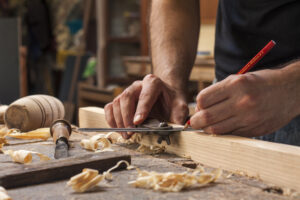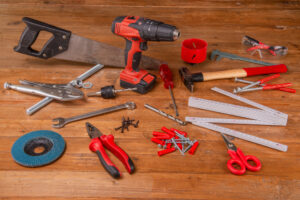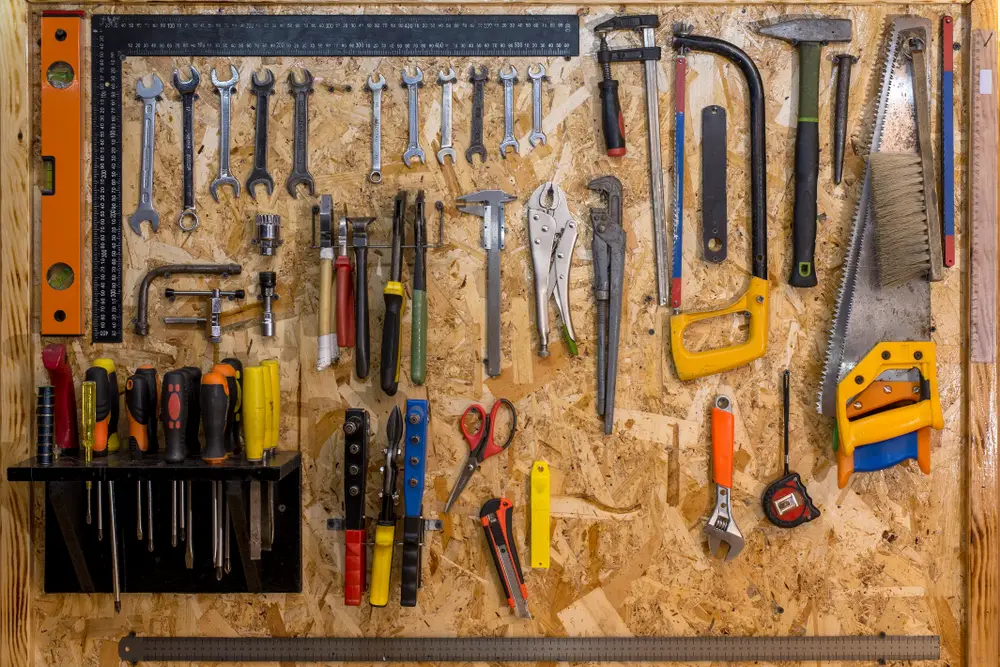
Carpentry hand tools are essential for any woodworking enthusiast. Whether you’re a beginner or a seasoned woodworker, having the right tools is crucial to the success of your projects. In this article, I will introduce you to the basics of carpentry hand tools and provide you with the information you need to get started in woodworking.
Key Takeaways
- Carpentry hand tools are crucial for woodworking projects.
- Using high-quality hand tools ensures professional and precise results.
- There are must-have and additional essential carpentry hand tools.
- When choosing hand tools, prioritize quality and consider your specific needs.
- Understanding common woodworking joints is essential for carpenters.
The Importance of Essential Carpentry Hand Tools
Carpentry hand tools are an indispensable asset when it comes to woodworking projects. These tools allow me to shape, cut, and join pieces of wood with utmost precision and accuracy. By using high-quality hand tools specifically designed for carpentry, I am able to work efficiently and achieve professional-grade results. Every tool in my workshop has a specific purpose and contributes to the overall success of my woodworking projects.
The Versatility of Essential Carpentry Hand Tools
From measuring and marking to cutting and shaping, each essential carpentry tool plays a crucial role in my woodworking process. Let me share a few examples:
- A quality tape measure ensures accurate measurements, ensuring that each piece of wood is cut to the perfect size.
- A sharp chisel allows me to carve and shape wood, creating intricate details and perfect joints.
- A reliable hand saw enables me to cut through various types of wood smoothly and effortlessly.
- A well-crafted hammer provides the necessary force to drive nails or secure joints.
These are just a few of the many essential carpentry hand tools that I rely on to bring my woodworking projects to life. Each one has its own unique purpose and contributes to the overall success and quality of my work.
With these essential carpentry hand tools at my disposal, I have the confidence to take on any woodworking project, knowing that I have the right tools for the job. The combination of precision, versatility, and high-quality craftsmanship allows me to create beautiful, lasting pieces that I can be proud of.
Must-Have Carpentry Hand Tools
As a woodworker, having the right tools in your arsenal is essential. Here are some must-have carpentry hand tools that will help you tackle various woodworking projects:
- Chisels: These sharp-edged tools are used for shaping and carving wood. They come in different sizes and are perfect for creating intricate designs.
- Hand saw: A hand saw is a versatile tool that allows you to make accurate cuts in wood. It is ideal for cutting boards, planks, and other wooden pieces.
- Hammers: A good set of hammers is indispensable in carpentry. They are used for driving nails, removing nails, and general woodworking tasks.
- Screwdrivers: You’ll need both flathead and Phillips screwdrivers to tighten or loosen screws in your woodworking projects.
- Measuring tape: Precise measurements are crucial in carpentry. A reliable measuring tape will help you accurately measure and mark dimensions on wood.
- Marking tools: Marking tools like pencils, marking knives, and chalk lines are essential for marking cut lines and angles on wood.
- Clamps: Clamps are used to hold pieces of wood together while glueing, nailing, or screwing them. They ensure a secure and stable connection.
- Block plane: A block plane is a small hand plane used for smoothing and shaping wood. It is perfect for achieving a smooth, finished surface.
These must-have carpentry hand tools will provide you with a solid foundation for your woodworking projects. With these tools at your disposal, you’ll be able to tackle a wide range of tasks and create beautiful pieces of craftsmanship. Whether you’re a beginner or an experienced woodworker, investing in quality carpentry tools is a worthwhile investment that can greatly enhance your woodworking experience.
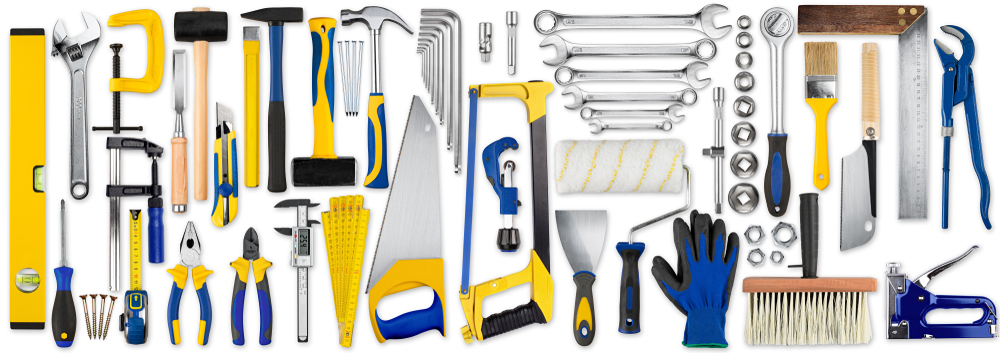
Additional Essential Carpentry Hand Tools
In addition to the must-have hand tools mentioned earlier, there are a few more essential carpentry hand tools that you should consider adding to your toolbox. These tools include:
- Chisels: Chisels are versatile tools that are used for carving, shaping, and removing material from wood. They come in various sizes and are essential for creating intricate details and smooth finishes.
- Block Plane: A block plane is a small hand plane that is used for fine-tuning and refining surfaces. It is ideal for tasks such as chamfering edges, smoothing end grain, and fitting joints.
- Claw Hammer: A claw hammer is a multipurpose tool that is used for driving nails, removing nails, and general woodworking tasks. Look for a hammer with a comfortable grip and a balanced weight for better control.
- Mitre Box and Saw: A mitre box and saw are used for making accurate mitre cuts and crosscuts. They are commonly used for trim work and picture framing.
- Japanese Pull Saw: A Japanese pull saw is known for its exceptional cutting ability and precision. It is designed to cut on the pull stroke and is perfect for delicate projects that require clean and accurate cuts.
These additional carpentry hand tools will expand your capabilities and allow you to tackle a wider range of woodworking projects with confidence and precision. Whether you’re a DIY enthusiast or a professional carpenter, investing in quality tools is essential for achieving professional results.
How to Choose Carpentry Hand Tools
When it comes to carpentry, having the right hand tools is essential for achieving quality results. The right tools can make your woodworking projects easier, more efficient, and more enjoyable. Here are some important factors to consider when choosing carpentry hand tools:
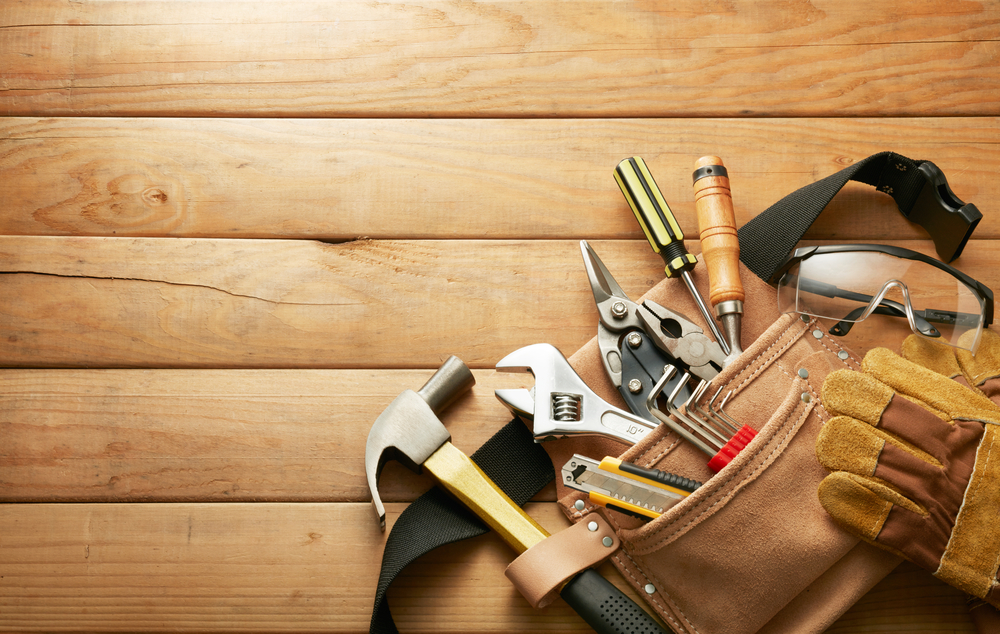
Quality and Durability
First and foremost, prioritize quality when selecting carpentry hand tools. Invest in tools made from durable materials that can withstand the demands of carpentry work. Look for tools with sharp and reliable blades that can make clean cuts without splintering the wood. Additionally, choose tools with comfortable handles to ensure a firm grip and minimize hand fatigue during extended periods of use.
Specific Project Needs
Consider the specific needs of your woodworking projects when choosing hand tools. Different projects require different tools, so it’s important to select tools that are appropriate for the tasks at hand. For example, if you frequently work with nails, a high-quality hammer will be essential. If you often need to make precise cuts, a quality handsaw or coping saw would be a wise investment.
Research and Reviews
Before making a purchase, conduct thorough research on different brands and models of carpentry hand tools. Read reviews from trusted sources and gather information about the experiences of other woodworkers. This will help you make an informed decision and ensure that you are investing in high-quality tools that will last for years to come.
Price Range
While quality is crucial, it’s also important to consider your budget when choosing hand tools for carpentry. Determine a price range that aligns with your financial situation and search for tools within that range. Remember to strike a balance between quality and affordability to ensure that you get the best value for your money.
| Tool | Key Features | Price Range |
|---|---|---|
| Claw Hammer | Steel head, curved claw for nail removal | £10 – £30 |
| Tape Measure | Durable housing, easy-to-read markings | £5 – £20 |
| Chisel Set | High-carbon steel blades, comfortable handles | £20 – £50 |
| Hand Saw | Sharp teeth for smooth cuts, ergonomic handle | £10 – £40 |
| Screwdriver Set | Variety of sizes and types, durable tips | £15 – £50 |
Common Woodworking Joints
As a carpenter or woodworker, it is crucial to have a good understanding of common woodworking joints. These joints are the foundation of many woodworking projects, allowing you to securely connect pieces of wood and create strong, durable structures. Here are some of the most commonly used woodworking joints:
1. Butt Joint
The butt joint is the simplest and most basic woodworking joint. It involves joining two pieces of wood by simply butting them together, end to end or at a right angle. While it is quick and easy to create, it is not the strongest joint and may require additional reinforcement.
2. Mitre Joint
The mitre joint is commonly used for creating 45-degree angles between two pieces of wood. It is often used in picture frames, corners of cabinets, and decorative mouldings. This joint requires precise cutting at a 45-degree angle to ensure a tight fit.
3. Dovetail Joint
The dovetail joint is known for its strength and aesthetic appeal. It involves interlocking pins and tails, creating a tight connection between two pieces of wood. The dovetail joint is commonly used in drawer construction and fine woodworking projects.
4. Mortise and Tenon Joint
The mortise and tenon joint is one of the oldest and strongest woodworking joints. It involves a rectangular hole (mortise) in one piece of wood and a corresponding projection (tenon) on the other piece. This joint is commonly used in furniture-making, door frames, and other structural applications.
5. Half-Lap Joint
The half-lap joint is created by removing an equal amount of material from each of the two pieces of wood. The resulting joint is flush and provides a large glueing surface, making it strong and reliable. It is commonly used in cabinet and furniture construction.
6. Dado Joint
The dado joint is created by cutting a groove or channel across the grain of one piece of wood, into which another piece of wood fits snugly. It is commonly used for shelves, dividers, and other structural elements in cabinets and bookcases.
7. Tongue and Groove Joint
The tongue and groove joint involves a protruding ridge (tongue) on one piece of wood that fits into a corresponding groove on another piece. This joint provides a strong connection and is commonly used in flooring, panelling, and cabinetry.
| Joint Type | Description |
|---|---|
| Butt Joint | Joining two pieces of wood by butting them together. |
| Miter Joint | Creating 45-degree angles between two pieces of wood. |
| Dovetail Joint | Interlocking pins and tails for a strong connection. |
| Mortise and Tenon Joint | Rectangular hole and corresponding projection for a secure fit. |
| Half-Lap Joint | Removing material from each piece for a flush connection. |
| Dado Joint | Groove across the grain for a snug fit with another piece. |
| Tongue and Groove Joint | Ridge and groove for a strong connection. |
Understanding these common woodworking joints will enable you to choose the appropriate joint for your woodworking projects, ensuring strength and durability. Practice and refine your skills with each joint, and soon you’ll be creating beautiful, well-constructed pieces of furniture and more.
Conclusion
As a woodworking enthusiast, I can’t stress enough how essential carpentry hand tools are to your craft. By investing in high-quality tools and familiarizing yourself with common woodworking joints, you can elevate your woodworking projects to new heights. Choosing tools that suit your specific needs and prioritizing quality will ensure the best results.
With the right carpentry hand tools in your arsenal, you’ll embark on your woodworking journey with confidence. From measuring and marking to cutting and shaping, these tools allow you to work with precision and achieve professional craftsmanship. Whether you’re a beginner or an experienced woodworker, having the right tools at your disposal is crucial for creating beautiful, lasting pieces.
Remember, the world of woodworking offers endless possibilities, and the right tools are your gateway to exploring this creative and fulfilling craft. So, don’t hesitate to equip yourself with carpentry hand tools that will stand the test of time, helping you bring your woodworking visions to life.
FAQ
Why are carpentry hand tools important for woodworking projects?
Carpentry hand tools allow you to shape, cut, and join pieces of wood with precision and accuracy, resulting in professional results.
What are some must-have carpentry hand tools?
Some must-have carpentry hand tools include a hammer, tape measure, chisel, handsaw, and screwdriver.
Are there any additional essential carpentry hand tools?
Yes, some additional essential carpentry hand tools include a block plane, marking knife, and a coping saw.
How should I choose carpentry hand tools?
Prioritize quality by looking for durable materials, sharp blades, and comfortable handles. Consider the specific needs of your woodworking projects and research different brands and read reviews to make an informed decision.
What are some common woodworking joints?
Some common woodworking joints include butt joints, mortise and tenon joints, and dovetail joints.
Why should I prioritize quality when investing in carpentry hand tools?
Investing in high-quality tools ensures durability, reliability, and longevity, resulting in better woodworking experiences and professional-grade results.
- Drill Battery Maintenance: Essential Tips for Cordless Drill Battery Care - February 5, 2024
- Troubleshooting Drill Issues - February 5, 2024
- Quick Drilling Techniques - February 2, 2024







